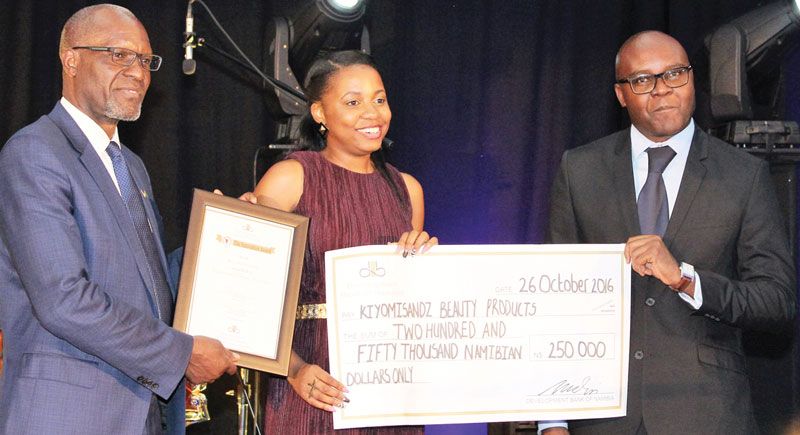
FABlab robotics team built first Namibian robot

20 December 2016 – Namibia is in the process of selecting a design team that will represent the country at the South African Regional Championships and the World Robotics Championships set for April 2017.
FABlab Director and Co-founder, Kirstin Wiedow earlier said that the first group of Robotics students and scholars to represent the country will only be finalised in early January.
Besides scholars preparing for the competitions, another group has been busy ensuring that science fiction is slowly becoming science fact, as Engineering students at the Namibia University of Science and Technology (NUST) are now experimenting with building their very own robots.
A visit to FABlab Namibia on the Science and Technology University’s campus reveals the existence of real robots in development, functioning prototypes and self-driving AV-bots. FABlab Namibia is the first advanced manufacturing, prototyping and design lab in the country and the largest FABlab currently within Africa.
Spearheading the project at FABlab is a Namibian engineer and robot enthusiast, Raouf Muhamedrahimov, who recently explained their work after revealing their own creation, named ‘LARRY’, (Learning Autonomous Road Rover).
“Our robot, ‘LARRY’ is a result of putting Artificial Intelligence (AI) theory into practice in Namibia,” he said.
LARRY is a small robot trained to autonomously navigate roads and recognise objects using an on-board camera. The project also includes the creation of a robotics kit which serves as a teaching and development tool for Namibian innovators.
Muhamedrahimov said the main reason for creating LARRY was to expand the internal capabilities of FABlab and by extension, that of Namibian students and entrepreneurs.
“This will be enabled through the numerous knowledge transfer programmes at FABlab, including robotics courses, as well as less formal routes and by providing a platform at the lab, to touch, play, experiment and build real ‘tangible’ machines. This is invaluable for enhancing the knowledge of the student,” he added.
Furthermore he said, providing access to an interactive robot is also a useful tool for engaging younger Namibians in science and technology at an early stage. LARRY is visible evidence to show that it is possible to turn Namibian dreamers into doers, once they see what is possible.
Muhamedrahimov said LARRY currently navigates using a machine learning algorithm known as an artificial neural network, inspired by how human brains solve problems.
“Using its on-board computer and camera to process data, LARRY first ‘learns’ by being steered manually through a sample road. Like our brains, the algorithm is trained to recognise and associate broader patterns in the data. Following this, we have an autonomous robot. In LARRY’s case, road curvature or obstacles ahead are recognised and best ways to navigate are automatically chosen, even in new, unseen environments,” he explained.
At the Namibia University of Science and Technology, robotics kits are designed and manufactured in-house from scratch under guidance from FABlav co-founder and deputy Bjorn Wiedow.
“The kits being developed and manufactured by students at NUST’s FABlab, teach hands-on robotics and make it accessible to the students, often giving the first real practical interaction between them and real robots,” Wiedow said.
According to him, an example of this value is apparent through the electrical engineering students in their team, Paulus Mapumba, FABlab Electronics Intern; Marcus Haoseb and Demetrius Ndhlovu, who were instrumental in the development of electrical systems and firmware for LARRY and the robotics kit.
Meanwhile, Wiedow said the team at FABlab is dreaming big for Namibia and although this will require further technological development and innovation, it is exactly what the innovative engineers strive to do and try to achieve.









































